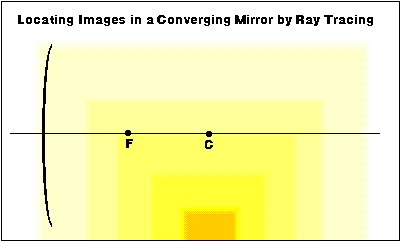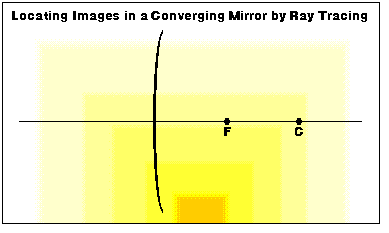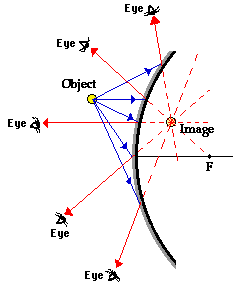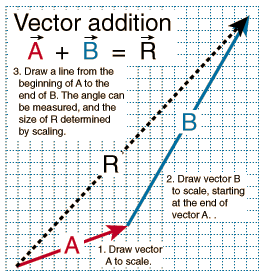Sunday, August 26, 2007
Applying what I know about RadiationThe questions can be seen on this document: Download
1.a.
1.Why is it necessary to get back the stolen radioactive materials?
2.Why is Iridium not harmful after 72 hours?
3.What does the Sentinel model 660b look like?
ANSWERS:
1. Because prolonged exposure to these Radioactive materials pose possible danger to the people who are exposed to them.
2. Because it loses half of its activity
3. It looks like a "wooden shoeshine box," according to De la Rosa. She said it measures 12 1/4 inches by 4 1/4 inches by 9 1/2 inches.
b.
1. What is the radioactive camera's composition? (what is it made of?)
2. Can these incident be a major threat to the country?
3. How can I know if the people I am with are exposed to these materials?
2.a.
I would instruct the students to put down the materials and ask them to leave and go to somewhere where they can be left alone (Much like quarantine..), then I would call the parents of the students and tell them about these incident.
Lastly, I will attempt to isolate the materials in a confined room, using protective gear.
b.
In order to arrive at the ideal course of action, I need to know the effects of Nuclear Radiation, how to identify radioactive materials (The characteristics of radioactive substances) and how to handle these substances.
Alpha, Beta, and Gamma.. with Positron on the side
lame title... (Kelan pa ba naging maganda mga title ng posts ko? hehe..)
What are Alpha Particles?
Particles that consists of two protons and two neutrons (meaning they are positively charged). Because of their large size, they lose energy quickly and therefore, has a weak penetrating power (they can be blocked by human skin). Even if they have low penetrating power, they are a highly ionizing form of radiation.
What are Beta Particles?
Particles that consists of fast-moving electrons ejected from the nuclei. They are smaller than Alpha particles, and can penetrate up to 1 or 2 cm of human flesh. According to this site,http://www.csun.edu/~vchsc006/356b/modE.html, beta particles has a moderate ionizing power.
What are Gamma Rays?
According to the site stated above, Gamma particles are electromagnetic radiation from the nucleus.
(According to en.wikipedia.org, gamma is not a particle, its a ray..)
They have great penetrating power, but weak ionizing power.
(I just noticed this thing.. Penetrating power is inversely proportional to ionizing power.. cool huh?)
What is a Positron?
It is the antimatter counterpart of the electron. It was discovered by Carl D. Anderson in 1932. It is the first evidence of the existence of antimatter. When it collides with an electron, electron-positron annihilation occurs, what happens in an electron-positron annihilation? The electron and the positron converts to its counterpart and the production of gamma ray photons.
Positrons are used in PETs (Positron Emission Topography) and in experiments on accelerator physics.
JOKE: WHO IS POSITRON?
Anak ni Megatron, Pamangkin ni Optimus Prime, inaanak ni Starscream, tsaka bestfriend ni Bumblebee... hahaha

hehe...
WAAAAAA!!!!
Hindi ako nakapunta ng robot fest sa shang!!! waaaa!!!! (bakit pa kasi pinagalitan kung kelan magpapaalam pumunta eh... badtrip...)
T_T
Tuesday, August 21, 2007
Another quarter, another chance... and a little bit of radiation :)It's the start of another quarter, and this time, I'll do something new, before the start of a lesson, I'll put something like "What I know about X..". And then, after a lesson, I'll put "What I learned about X...", cool huh?
What I know about Radiation
-Radiation is energy transmitted in the forms of waves
-It has good effects and bad effects
-The best known sources of radiation are: x-ray, uv rays, microwaves, infrared waves, or to sum it all up, light. Another known source of radiation is are nuclear explosions
-It has industrial uses
-It is usually related to high temperatures
-Certain devices (ex. Geiger counter) are used to detect radiation
-Radiation is all around us
Ahmm...
This blog is checked already by our teacher, mome.. Ahmm.. What can I say in this post?
Thanks for the pieces of advice, I'll try to improve this blog with that in mind.. (please check my grammar, I'm not sure if it's correct..)
Monday, August 6, 2007
At Last...The S. Test is over.. Not to be boastful or anything, but I think it is easier than the first, but a lot longer..
But the Periodical Test (from hell?? hehe..) is fast approaching.. better study more :)
I think the other posts cannot be seen anymore.. please click on archives if you want to see older posts..
Sunday, August 5, 2007
Ahmmm....I haven't posted my thoughts this week.. So I'll post them :)
The Graded Recitation was held last week.. And I answered it correctly.. thanks
to the method of educated guessing... What the hell is that???
Hehe, You read it right... I guessed my answer, but it wasn't a wild one.. It was educated.
Ahmm.. There's another summative test this week.. And I think it will be another hour of nonstop headache and braindrains...
Saturday, August 4, 2007
MTV is now finished!!!Our MTV is now finished!!!! Woohoo!!!! Wanna see it?? the link is: http://youtube.com/watch?v=fMP22WVBPx0
It's very wacky, hehe...
Converging and Diverging Lens
Before I place the diagrams for the two types of lenses, What is a lens?
A lens is a device that causes light to either converge and concentrate or to diverge. It is usually formed from a piece of shaped glass or plastic. Analogous devices used with other types of electromagnetic radiation are also called lenses: for instance, a microwave lens can be made from paraffin wax.
What is a Converging Lens?
A lens that is thickest in the middle, causing parallel rays of light to converge to a focus.

Now, what is a diverging lens?
A lens that is thinnest in the middle and that causes parallel rays of light to diverge.

Sources:http://wikipedia.org//
Eye Camera Comparison
Human eyes have often been compared to cameras. They are alike in terms of structure, but they have one fundamental difference in functioning mechanism.
| Function | Camera | Human Eye | |
|---|---|---|---|
 | |||
| Similarities | |||
| 1. | opening for light to enter | aperture | pupil |
| 2. | control the amount of light entering camera/eye | diaphragm control size of aperture | iris muscles control size of pupil |
| 3. | refract light | glass biconvex lens | mainly cornea ; lens, aqueous & vitreous humor |
| 4. | object of light action to form image | photosensitive chemicals on film | photoreceptors(rods & cones) in retina |
| 5. | absorb excessive light to prevent multiple images formation | dark internal surface | pigmented, dark choroid |
| Difference | |||
| 1. | focusing mechanism | change distance between lens & film | change focal length of lens using ciliary muscles |
FIBER OPTICS
Fiber optics (optical fibers) are long, thin strands of very pure glass about the diameter of a human hair. They are arranged in bundles called optical cables and used to transmit light signals over long distances.

If you look closely at a single optical fiber, you will see that it has the following parts:
* Core - Thin glass center of the fiber where the light travels
* Cladding - Outer optical material surrounding the core that reflects the light back into the core
* Buffer coating - Plastic coating that protects the fiber from damage and moisture
Hundreds or thousands of these optical fibers are arranged in bundles in optical cables. The bundles are protected by the cable's outer covering, called a jacket.
Optical fibers come in two types:
* Single-mode fibers
* Multi-mode fibers
Single-mode fibers have small cores (about 3.5 x 10-4 inches or 9 microns in diameter) and transmit infrared laser light (wavelength = 1,300 to 1,550 nanometers). Multi-mode fibers have larger cores (about 2.5 x 10-3 inches or 62.5 microns in diameter) and transmit infrared light (wavelength = 850 to 1,300 nm) from light-emitting diodes (LEDs).
Some optical fibers can be made from plastic. These fibers have a large core (0.04 inches or 1 mm diameter) and transmit visible red light (wavelength = 650 nm) from LEDs.

The light in a fiber-optic cable travels through the core (hallway) by constantly bouncing from the cladding (mirror-lined walls), a principle called total internal reflection. Because the cladding does not absorb any light from the core, the light wave can travel great distances. However, some of the light signal degrades within the fiber, mostly due to impurities in the glass. The extent that the signal degrades depends on the purity of the glass and the wavelength of the transmitted light (for example, 850 nm = 60 to 75 percent/km; 1,300 nm = 50 to 60 percent/km; 1,550 nm is greater than 50 percent/km). Some premium optical fibers show much less signal degradation -- less than 10 percent/km at 1,550 nm.
CONCAVE MIRRORS
Suppose we place some object in front of a concave mirror. Light will bounce off the object in all directions if it is a diffuse reflector or be produced by it in all directions if it is a candle or a light bulb. Some of this light will strike the concave mirror and reflect from it according to the Law of Reflection. In order to locate any image produced by the mirror, you do not have to trace the paths of an arbitrary number of rays - the three rays discussed on the preceding page will do!
Suppose we place an object in front of a concave mirror, with the bottom of the object resting on the axis of the mirror, at a distance greater than the radius of curvature from the mirror. In order to locate the image:
1. Draw a ray that leaves the tip of the object, travels parallel to the axis, strikes the mirror, and is reflected through the focus of the mirror. Notice that if you were looking back along this ray toward the mirror, you would see the image (reflection) of the tip of the object in the mirror.
2. Draw a ray that leaves the tip of the object, travels through the focus of the mirror, strikes the mirror, and is reflected parallel to the axis. Again, if you would look back along this ray toward the mirror, you would see the image of the tip of the object in the mirror.
3. Draw a ray that passes through the center of curvature of the mirror and the tip of the object. It is reflected straight back along its original path.

If the object is closer than one focal length from the mirror, something surprising happens. As shown in the diagram, the object produces an upright, enlarged, virtual image behind the mirror! Converging mirrors can produce both real and virtual images!

CONVEX MIRRORS
The image formed by a convex mirror is virtual, upright, and smaller than the object. This is illustrated by the ray diagram below. The diagram depicts the three rays that are discussed in the following paragraph. A ray (1) parallel to the optical axis is reflected as if it came from the focal point (f). A ray (2) directed toward the focal point is reflected parallel to the optical axis. A ray (3) striking the mirror at the optical axis is reflected at an angle equal to the angle of incidence.

PLANE MIRRORS
A plane mirror is a planar reflecting surface, on which specular (regular) reflection is observed.
A virtual image is formed by a plane mirror. The rays reflecting from the mirror appear to have originated from the location of the virtual image.
On a diagram, a virtual image is usually depicted by a broken (dotted) arrow.
The image in a plane mirror is located as far behind the mirror as the object forming it is in front of the mirror. It is the same size as the object. (magnification = +1)

A ray diagram is used to trace the path of light rays.
Thursday, August 2, 2007
I posted this a long time ago, just needed to repost because I edited this blog..GRAPHICAL METHOD
Adding two vectors A and B graphically can be visualized like two successive walks, with the vector sum being the vector distance from the beginning to the end point. Representing the vectors by arrows drawn to scale, the beginning of vector B is placed at the end of vector A. The vector sum R can be drawn as the vector from the beginning to the end point

http://hyperphysics.phy-astr.gsu.edu/hbase/vect.html
COMPONENT METHOD
* Using trigonometry, find the x-component and the y-component for each vector. Refer to a diagram of each vector to correctly reason the sign, (+ or -), for each component.
* Add up both x-components, (one from each vector), to get the x-component of the total.
* Add up both y-components, (one from each vector), to get the y-component of the total.
* Add the x-component of the total to the y-component of the total then use the Pythagorean theorem and trigonometry to get the size and direction of the total.
http://id.mind.net/~zona/mstm/physics/mechanics/vectors/componentAddition/componentAddition2.htm








